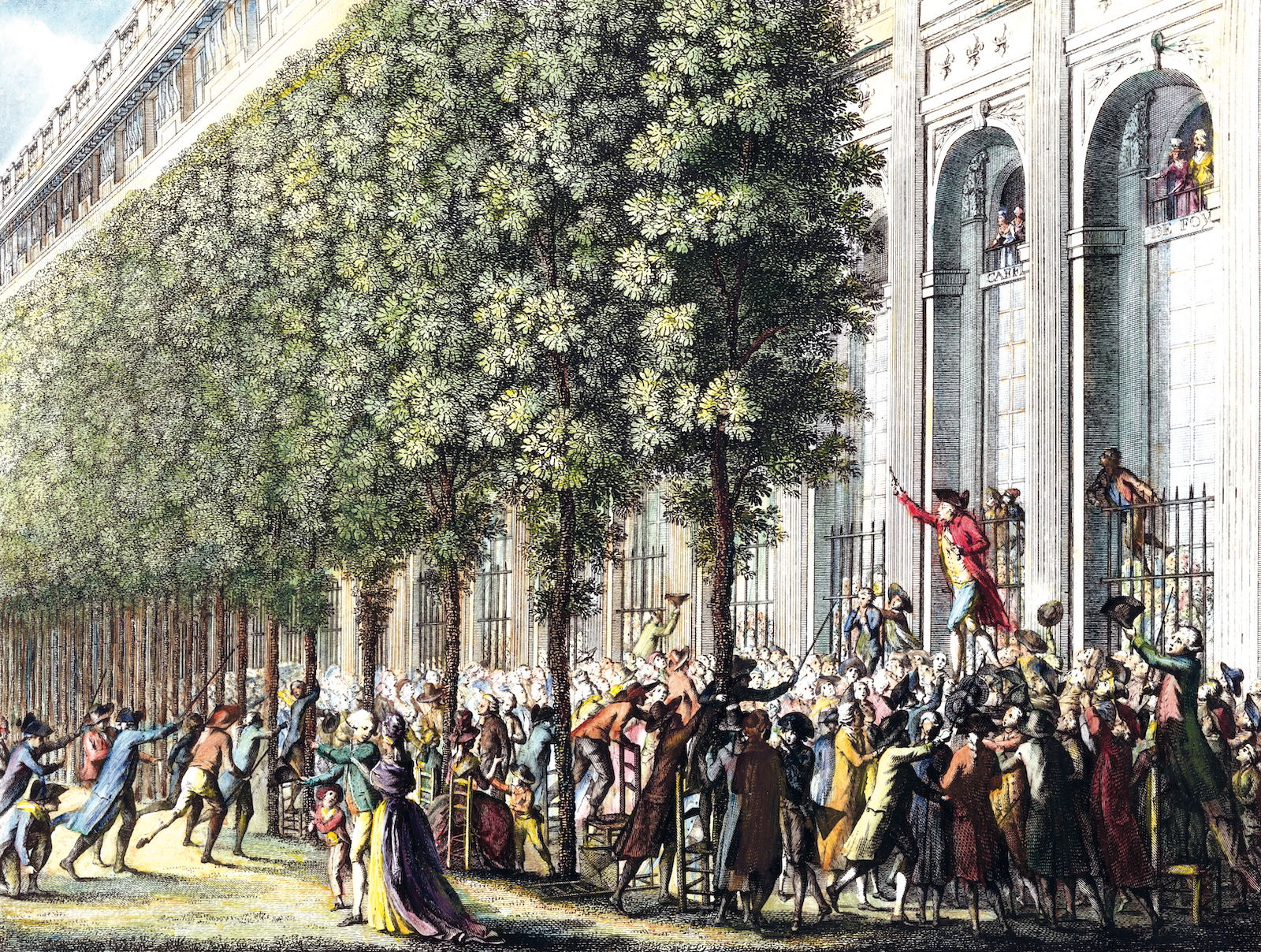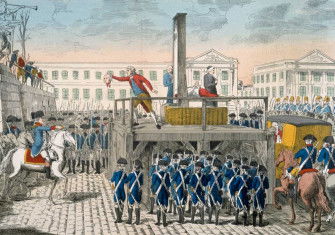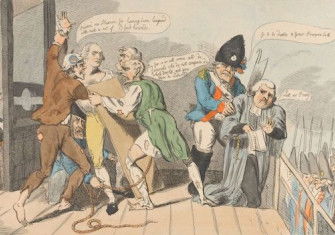‘The Revolutionary Temper’ by Robert Darnton review
The Revolutionary Temper: Paris, 1748-1789 by Robert Darnton is a sweeping account of events from the Parisian perspective, from disastrous wars to fights for religious toleration.

The Tree of Cracow was a huge chestnut tree that stood in the northern part of the gardens of the Palais-Royal at the heart of Paris in the years before the French Revolution. Beneath its branches newsmongers gathered daily to dispense the news, ancien régime style, by word of mouth. It was part of an information system – a sort of 18th-century equivalent to social media – and much like its modern counterpart it bristled with rumour, speculation, conspiracy theories and questionable assertions. Under a regime that censored politics, religion and morals, the Palais-Royal occupied a privileged space. It belonged to the Duke of Orléans, a cousin of Louis XVI, and one of the wealthiest men in France. The precincts of the Palais-Royal housed shops, theatres, cafes, gambling dens, printing presses and sellers of books and pamphlets, but Orléans had jurisdiction over the site, which meant that the police could not raid its bookstalls or scour its cafes for undesirables. As the trade in clandestine books and unfettered news thrived, it became a centre for the exchange of ideas. And, in the late 18th century, it became the birthplace of the French Revolution.
No one is better placed to uncover this world and bring it to life than Robert Darnton, a historian who emerged from a background in journalism at the New York Times to write a series of pathbreaking studies on 18th-century literature and the cultural impact of the Enlightenment that have inspired a generation of historians. The Revolutionary Temper is the culmination of Darnton’s output and, like all his works, it is very readable. It reveals the reactions of ordinary Parisians to political developments, from the mid-18th century to the storming of the Bastille in July 1789. Politics was the business of the king and his ministers, conducted behind closed doors in the form of power struggles between factions of rival courtiers, ministers and royal mistresses. For ordinary Parisians, excluded from the privileged world of Versailles, concrete information was lacking, sowing doubt and, therefore, speculation and wild rumour. Occasionally politics circumvented censorship – often with the connivance of disaffected courtiers – and spilled onto the streets of Paris.
Darnton provides a sweeping account of succeeding events from the Parisian perspective, encompassing disastrous wars, struggles over Enlightenment ideas, fights for religious toleration and crazes for all manner of new phenomena, such as hot air balloons and mesmerism. He reveals this story through evocative sources, including pamphlets, libel cases, judicial memoirs and songs – the latter particularly dangerous, because they reached down through every stratum of society, including the poor and illiterate.
The French capital was accustomed to riots, known as émotions populaires. Many were sparked by food shortages, poverty and hunger; others originated in sinister rumours – such as the outcry in 1750 that followed the disappearances of children from the streets of Paris, as stories spread that they had been abducted by police agents in disguise, their blood destined to supply baths for curing aged nobles of leprosy. Popular retributive violence sometimes culminated on the Place de Grève, the traditional site of protracted public executions, in ritualised incidents of crowd brutality that would be replicated during the first summer of the Revolution.
Criticism of the monarchy reached new heights with the Diamond Necklace Affair of 1785, when the reading public bought into the scandalous theory that Marie Antoinette had encouraged the sexual advances of a cardinal in order to acquire a diamond necklace of enormous value. Imagination and suspicion had a field day. Pornographic pamphlets depicted the queen as sexually debauched, a parasite, leeching off the people. The police confiscated the most defamatory of these libels, locking them in the Bastille. Following the prison’s fall they emerged once more into circulation, further damaging the queen’s reputation.
Yet it was not scurrilous literature but state bankruptcy that brought about the demise of the ancien régime and opened the door to revolution. The financial crisis that began in 1786 exploded into the public domain. The political and financial secrecy with which the monarchy had long surrounded itself collapsed along with state censorship. All sides used pamphlets in a paper war, making calculated appeals to public opinion. The story of the struggle between the monarchy and the magistrates of the Paris parlement, the standoff over reform of the tax system, the summoning of the Estates-General and the escalating involvement of the Third Estate as the embodiment of ‘the nation’ has often been told, but seldom with such assurance. Darnton is a brilliant guide; the result is enthralling.
But although we get a vivid picture of events in the years preceding 1789, the reader may be left with questions as to why they occurred. Darnton’s stated aim is ‘to show how the French Revolution happened’ through a narrative that demonstrates ‘the emergence of a revolutionary temper that was ready to destroy one world and construct another’. In a concluding bibliographic essay he discusses the work of other historians – Daniel Roche, Arlette Farge and David Garrioch among them – who have also explored the Revolution’s origins. But their analysis is largely kept out of Darnton’s narrative. In what ways did unrest in the late 1780s differ from earlier instances of turbulence of the sort Darnton has previously detailed? How did the French proceed from rumour, reaction and retributive violence to producing a framework for revolution and acting on it? The process by which in 1789 ‘ordinary people began to take their fate into their own hands’ is central to the Revolution. In The Revolutionary Temper we see it happening, but not enough of why it happened. Despite Darnton’s immense contribution there is still much about the relationship between ideas, disaffection and revolution that eludes us.
The Revolutionary Temper: Paris, 1748-1789
Robert Darnton
Allen Lane, 576pp, £35
Buy from bookshop.org (affiliate link)
Marisa Linton is Professor Emerita of History at Kingston University. Her latest book is Terror: The French Revolution and Its Demons (Polity, 2021).






